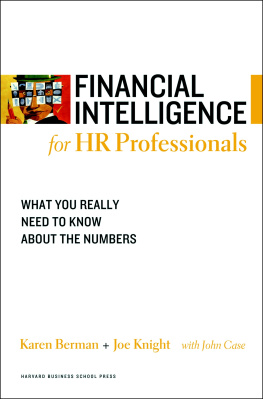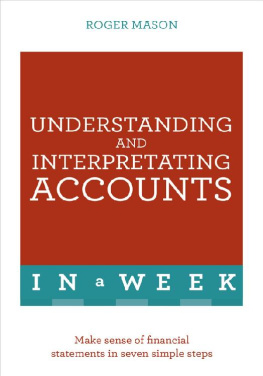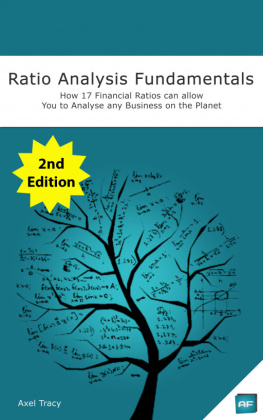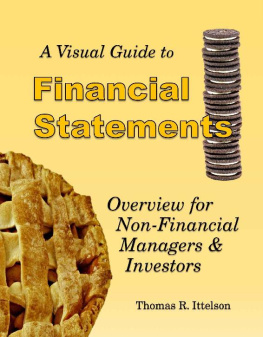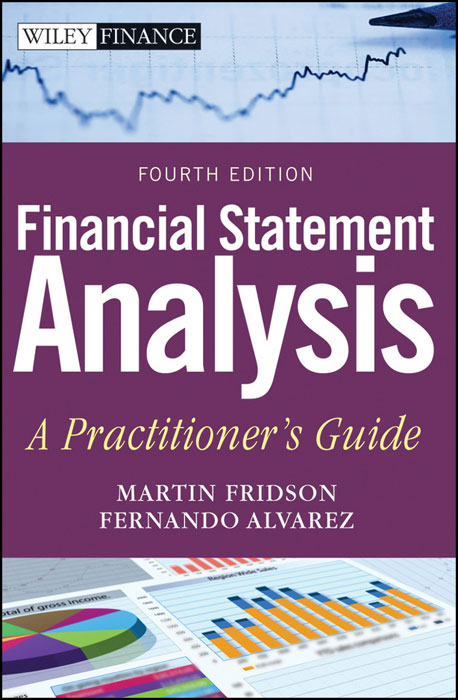Additional Praise for Financial Statement Analysis, Fourth Edition
This is an illuminating and insightful tour of financial statements, how they can be used to inform, how they can be used to mislead, and how they can be used to analyze the financial health of a company.
Jay O. Light, Dean Emeritus, Harvard Business School
Financial Statement Analysis should be required reading for anyone who puts a dime to work in the securities markets or recommends that others do the same.
Jack L. Rivkin, Director, Neuberger Berman Mutual Funds and Idealab
Fridson and Alvarez provide a valuable practical guide for understanding, interpreting, and critically assessing financial reports put out by firms. Their discussion of profitsquality of earningsis particularly insightful given the recent spate of reporting problems encountered by firms. I highly recommend their book to anyone interested in getting behind the numbers as a means of predicting future profits and stock prices.
Paul Brown, Associate Dean, Executive MBA Programs, Leonard N. Stern School of Business, New York University
Let this book assist in financial awareness and transparency and higher standards of reporting, and accountability to all stakeholders.
Patricia A. Small, Treasurer Emeritus, University of California; Partner, KCM Investment Advisors
This book is a polished gem covering the analysis of financial statements. It is thorough, skeptical, and extremely practical in its review.
Daniel J. Fuss, Vice Chairman, Loomis, Sayles & Company, LP
Founded in 1807, John Wiley & Sons is the oldest independent publishing company in the United States. With offices in North America, Europe, Australia and Asia, Wiley is globally committed to developing and marketing print and electronic products and services for our customers' professional and personal knowledge and understanding.
The Wiley Finance series contains books written specifically for finance and investment professionals as well as sophisticated individual investors and their financial advisors. Book topics range from portfolio management to e-commerce, risk management, financial engineering, valuation and financial instrument analysis, as well as much more.
For a list of available titles, visit our Web site at www.WileyFinance.com.
Copyright 2011 by Martin Fridson and Fernando Alvarez. All rights reserved.
Published by John Wiley & Sons, Inc., Hoboken, New Jersey.
Published simultaneously in Canada.
No part of this publication may be reproduced, stored in a retrieval system, or transmitted in any form or by any means, electronic, mechanical, photocopying, recording, scanning, or otherwise, except as permitted under Section 107 or 108 of the 1976 United States Copyright Act, without either the prior written permission of the Publisher, or authorization through payment of the appropriate per-copy fee to the Copyright Clearance Center, Inc., 222 Rosewood Drive, Danvers, MA 01923, (978) 750-8400, fax (978) 646-8600, or on the Web at www.copyright.com . Requests to the Publisher for permission should be addressed to the Permissions Department, John Wiley & Sons, Inc., 111 River Street, Hoboken, NJ 07030, (201) 748-6011, fax (201) 748-6008, or online at http://www.wiley.com/go/permissions .
Limit of Liability/Disclaimer of Warranty: While the publisher and author have used their best efforts in preparing this book, they make no representations or warranties with respect to the accuracy or completeness of the contents of this book and specifically disclaim any implied warranties of merchantability or fitness for a particular purpose. No warranty may be created or extended by sales representatives or written sales materials. The advice and strategies contained herein may not be suitable for your situation. You should consult with a professional where appropriate. Neither the publisher nor author shall be liable for any loss of profit or any other commercial damages, including but not limited to special, incidental, consequential, or other damages.
For general information on our other products and services or for technical support, please contact our Customer Care Department within the United States at (800) 762-2974, outside the United States at (317) 572-3993 or fax (317) 572-4002.
Wiley also publishes its books in a variety of electronic formats. Some content that appears in print may not be available in electronic books. For more information about Wiley products, visit our web site at www.wiley.com .
Library of Congress Cataloging-in-Publication Data
Fridson, Martin S.
Financial statement analysis : a practitioner's guide / Martin S. Fridson and Fernando Alvarez. 4th ed.
p. cm. (Wiley finance ; 597)
Includes bibliographical references and index.
ISBN 978-0-470-63560-5 (hardback); ISBN 978-1-118-06418-4 (ebk);
ISBN 978-1-118-06419-1 (ebk); ISBN 978-1-118-06420-7 (ebk)
1. Financial statements. 2. Ratio analysis.I. Alvarez, Fernando, 1964II. Title.
HF5681.B2F772 2011
657.3--dc22
2010054229
In memory of my father, Harry Yale Fridson, who introduced me to accounting, economics, and logic, as well as the fourth discipline essential to the creation of this bookhard work!
M. F.
For Shari, Virginia, and Armando.
F. A
Preface to Fourth Edition
This fourth edition of Financial Statement Analysis, like its predecessors, seeks to equip its readers for the practical challenges of contemporary business. Once again, the intention is to acquaint readers who have already acquired basic accounting skills with the complications that arise in applying textbook-derived knowledge to the real world of extending credit and investing in securities. Just as a swiftly changing environment necessitated extensive revisions and additions in the second and third editions, new concerns and challenges for users of financial statements have emerged during the first decade of the twenty-first century.
A fundamental change reflected in the third edition was the shift of corporations executive compensation plans from a focus on reported earnings toward enhancing shareholder value. In theory, this new approach aligned the interests of management and shareholders, but the concept had a dark side. Chief executive officers who were under growing pressure to boost their corporations share prices could no longer increase their bonuses by goosing reported earnings through financial reporting tricks that were transparent to the stock market. Instead, they had to devise more opaque methods that gulled investors into believing that the reported earnings gains were real.
To adapt to the new environment, corporate managers became far more aggressive in misrepresenting their performance. They moved beyond exaggeration to outright fabrication of earnings through the use of derivatives and special purpose vehicles that never showed up in financial statements and had little to do with the production and sale of goods and services. This insidious trend culminated in colossal accounting scandals involving companies such as Enron and WorldCom, which shook confidence not only in financial reporting but also in the securities markets.
Government responded to the outrage over financial frauds by enacting the Sarbanes-Oxley Act of 2002. Under its provisions, a companys chief executive officer and chief financial officer were required to attest to the integrity of the financial statements. They were thereby exposed to greater risk than formerly of prosecution and conviction for misrepresentation. Sarbanes-Oxley did create a deterrent to untruthful reporting, but as case studies in this new edition demonstrate, users of financial statements still cannot breathe easy.



